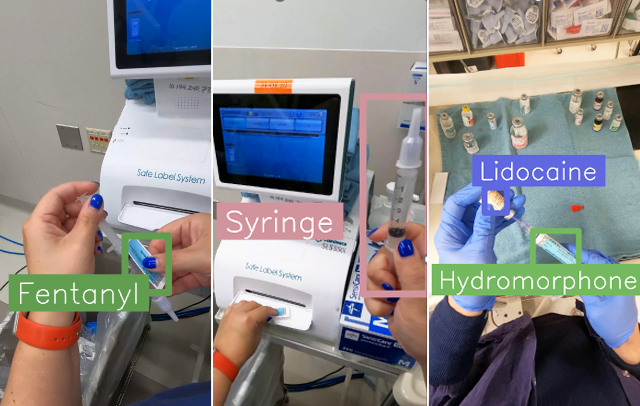A new wearable camera system developed by the University of Washington uses artificial intelligence to double-check medication administration in clinical settings to prevent mix-ups. The technology was found to have 99.6% sensitivity and 98.8% specificity at identifying vial mix-ups. Dr. Kelly Michaelsen, an assistant professor of anesthesiology and pain medicine at the UW School of Medicine, believes that being able to prevent medication errors in real-time is a powerful tool. Drug administration mistakes, particularly with injected medications, are a significant concern in healthcare settings, with at least 1 in 20 patients experiencing a preventable error in a clinical setting.
Research shows that medication errors are a leading cause of preventable errors in clinical settings, affecting millions of patients annually and costing billions of dollars. To address this issue, researchers used GoPro cameras to collect videos of anesthesiology providers in operating rooms performing 418 drug draws. They added data to the videos to identify the contents of vials and syringes, training their model to recognize them based on size, shape, vial cap color, and label print size. The system does not read labels but can identify the items based on these characteristics.
The system could potentially incorporate an audible or visual signal to alert a provider of a mistake before administering the drug. While the goal is to commercialize the technology, further testing is needed before large-scale deployment. Future steps will involve training the system to detect more subtle errors, such as drawing the incorrect volume of medication. Researchers are also considering pairing the technology with devices like Meta smart glasses. The study was published in npj Digital Medicine, with researchers from Carnegie Mellon University, Makerere University in Uganda, and the Toyota Research Institute contributing to the work.
In high-stress clinical settings like operating rooms, emergency rooms, and intensive care units, medical providers can often mix up syringes and vials, potentially delivering the wrong medications to patients. A new wearable camera system developed by the University of Washington uses artificial intelligence to provide an extra layer of safety by double-checking medication administration. The technology was found to have high sensitivity and specificity in identifying vial mix-ups, making it a valuable tool in preventing medication errors in real-time.
The prevalence of drug administration mistakes is a significant concern in healthcare, with preventable errors affecting millions of patients and costing billions of dollars annually. By using GoPro cameras to collect videos of anesthesiology providers performing drug draws in operating rooms, researchers were able to train their AI model using data on vial and syringe contents. The system can identify items based on size, shape, and other characteristics, enabling it to recognize mix-ups without reading labels. Future developments may include incorporating audible or visual alerts to notify providers of errors before medication is administered.
While the ultimate goal is to commercialize the technology, further testing and refinement are needed before widespread deployment. Future steps will involve training the system to detect more subtle errors, such as incorrect medication volumes, and exploring potential integration with devices like Meta smart glasses. The research was published in npj Digital Medicine and involved collaboration with researchers from Carnegie Mellon University, Makerere University in Uganda, and the Toyota Research Institute. The development of this technology represents a promising advancement in improving medication safety in clinical settings and reducing the risks associated with drug administration mistakes.












